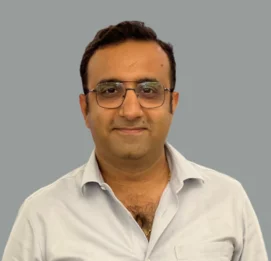Medical devices comprise of a vast range of equipment, ranging from a single pair of tongs to a heart-lung machine. Along with medicines and allied healthcare technologies, medical devices are important for modern patient‑centric care in all sorts of clinical settings like bedside, rural clinics, or metro hospitals. Medical devices have improved the quality of healthcare by making diagnosis, prevention, treatment, and monitoring of diseases simpler and efficient.
Indian medical device industry
Medical device industry is a huge industry, manufacturing wide range of products. In India, the medical device industry has a relatively small share of the global market when it is compared to the size of its economy. India ranks twentieth in the world in medical device market and it is fourth largest market in Asia. Most of the medical devices are imported in India which constitutes over 65% of the total market. The Indian medical device industry is driven by foreign manufacturers. The largest medical device manufacturing segment (53.7%) in India comprises of medical electronics, hospital equipments, and surgical apparatus. Around 31.3% of the medical device industry deals with medical disposables and consumables while diagnostic reagents and implants contributes to 7.9% and 7.1% of the market share respectively (Figure 1).
Figure 1*: Components of Indian Medical Devices Industry
*Source: Sethi R, Popli H, Sethi S. Medical Devices Regulation in United States of America, European Union and India: A Comparative Study. Pharm Regul Aff. 2017;6(1):1-9.
Medical devices regulations in India (CLAA scheme)
The Central Drug Standard Control Organization (CDSCO) has assigned a particular division i.e. Medical Device and Diagnostics Division which is dedicated to regulate the medical devices. Under the Central Licensing Approval Authority (CLAA) scheme, the CDSCO notified some of the medical devices and diagnostic kits which are being regulated for the manufacture, import and sale of the medical devices. These medical devices are also called as notified devices. The medical devices are regulated by Drugs and Cosmetics Act (1940) and Rules (1945) for the purpose of import, manufacture, sales and distribution. Currently, fourteen medical devices are notified under the CLAA scheme which are mentioned below:
- Disposable Hypodermic Syringes
- Disposable Hypodermic Needles
- Disposable Perfusion Sets
- In-vitro Diagnostic Devices for HIV, HBsAg and HCV
- Cardiac Stents
- Drug Eluting Stents
- Catheters
- Intra Ocular Lenses
- V. Cannulae
- Bone Cement
- Heart Valves
- Scalp Vein Set
- Orthopaedic Implants
- Internal Prosthetic Replacements
Current medical device rules (2017) in India
The Government of India has realized the need for framing separate rules and regulations for medical devices in order to improve the Indian regulatory system for medical devices. Hence, Government of India has issued a draft of medical devices to help the medical device industry and will separate the regulatory norms for manufacturing of medical devices from drugs. The draft of medical device was issued on January 31, 2017 and came into force on January 31, 2018.
The new rules and regulations for medical devices will create a novel and different regulatory apparatus by creating a separate registration process for medical devices. The key features of medical device rules, 2017, are summarized below:
- The new rules have classified the medical devices on the basis of risk. These classes include:
- Class A – Low risk
(e.g. catheters, surgical dressings)
- Class B – Low moderate risk
(e.g. disposable hypodermic needles, orthopedic implants)
- Class C – Moderate high risk
(e.g. cardiac stents, internal prosthetics replacements)
- Class D – High risk
(e.g. drug eluting stents, heart valves)
- The Indian regulators will have unique identification for their devices.
- The medical devices should follow the standards established by the Bureau of Indian Standards (BIS). Where no relevant standard of any medical device has been laid down, then those devices should follow the standards laid down by International Organization for Standardization (ISO) and International Electrotechnical Commission (IEC) standards.
- Licenses will remain valid indefinitely which are issued to the device registrants, along with the payment of the license retention fees, unless cancelled or surrendered.
- Licenses and registration certificates received before the implementation of the new rules will be valid till expiry or after an 18-month period following implementation, whichever is later.
- Test license will be valid only for one year.
- The manufacturing sites of the devices will be audited by the notified bodies.
- Medical devices for which trials are not required will need only a pilot study on a smaller population in order to test the safety and performance of the device followed by a pivotal trial on a large population.
- These rules would be imposed by Central Licensing Authority and State Licensing Authority
- The Central Licensing Authority is responsible for importing medical devices of all classes, and manufacturing of class C and D medical devices. Also, it is responsible for clinical investigation and approval of investigation of devices, and co-ordination with the State Licensing Authorities.
- The State Licensing Authorities are responsible for the manufacturing, sale, and distribution of the devices that fall under class A or B, and also, control of sale, stock, exhibit, or offer for sale or distribution of in-vitro medical devices (IVDs) of all classes.
The new rules for medical devices will improve the accessibility and affordability of medical devices globally and will create a favourable and encouraging environment for development and innovation of new medical devices in India. The main objective of Government of India, through these rules, is to develop the confidence of the investors in medical device industry in India and to maintain the quality of all devices as per the international standards.
Turacoz Healthcare Solutions (THS) always aims to keep professionals updated on the current rules and regulations pertinent to regulatory affairs. Turacoz is dedicated towards providing scientific/medical writing support to the industry and academia. With expertise in various clinical trial related documents like Investigator Brochures (IBs), Protocols, Clinical Study Reports (CSRs), Common Technical Document (CTD), and Prescribing Information (PI), we aim to deliver the best quality and guideline compliant documents to the pharma and different sectors of healthcare industry.































